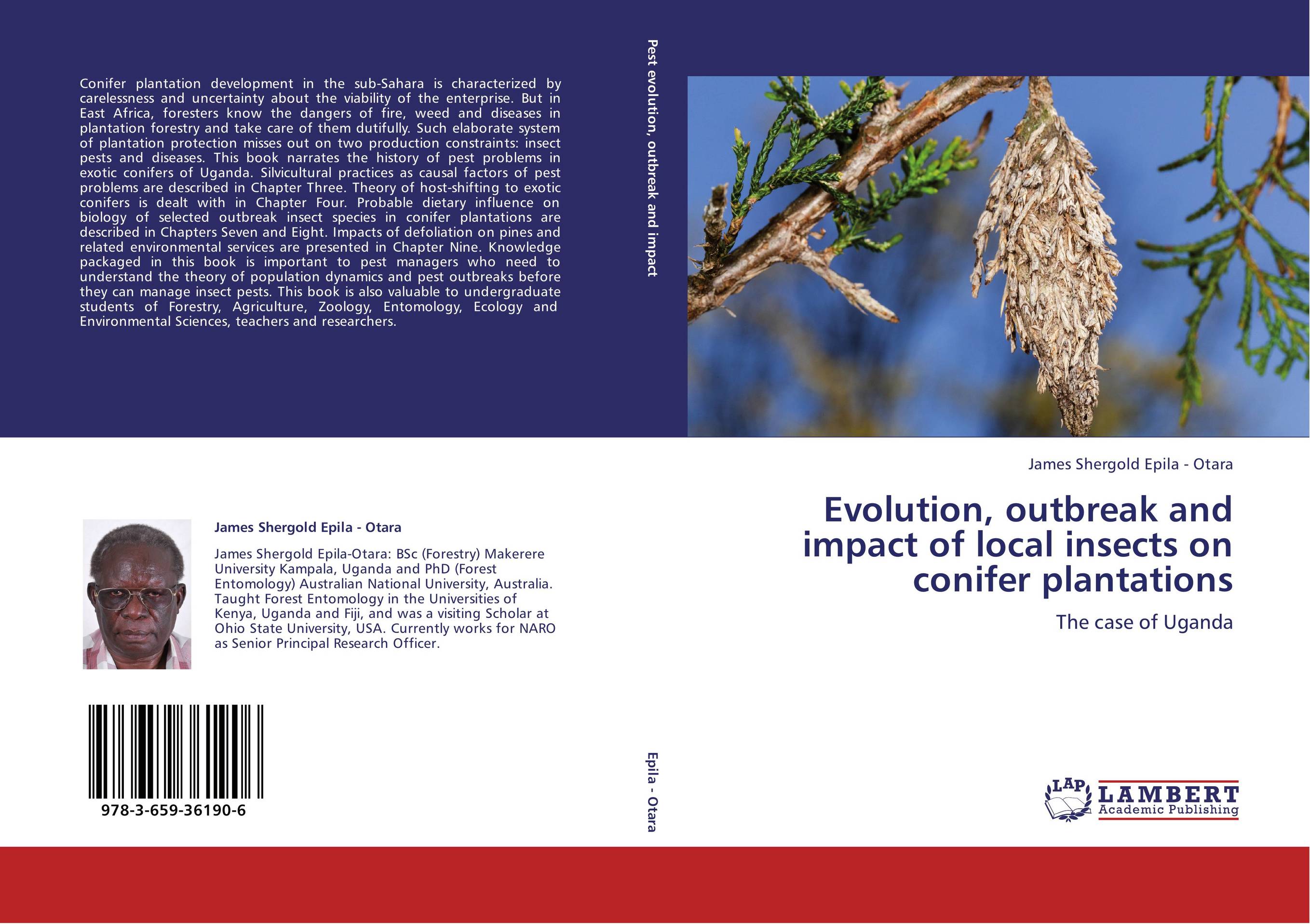| Поиск по каталогу |
|
(строгое соответствие)
|
- Профессиональная
- Научно-популярная
- Художественная
- Публицистика
- Детская
- Искусство
- Хобби, семья, дом
- Спорт
- Путеводители
- Блокноты, тетради, открытки
Evolution, outbreak and impact of local insects on conifer plantations. The case of Uganda

В наличии
| Местонахождение: Алматы | Состояние экземпляра: новый |

Бумажная
версия
версия
Автор: James Shergold Epila - Otara
ISBN: 9783659361906
Год издания: 2013
Формат книги: 60×90/16 (145×215 мм)
Количество страниц: 268
Издательство: LAP LAMBERT Academic Publishing
Цена: 53031 тг
Положить в корзину
Позиции в рубрикаторе
Отрасли экономики:Код товара: 120033
| Способы доставки в город Алматы * комплектация (срок до отгрузки) не более 2 рабочих дней |
| Самовывоз из города Алматы (пункты самовывоза партнёра CDEK) |
| Курьерская доставка CDEK из города Москва |
| Доставка Почтой России из города Москва |
Аннотация: Conifer plantation development in the sub-Sahara is characterized by carelessness and uncertainty about the viability of the enterprise. But in East Africa, foresters know the dangers of fire, weed and diseases in plantation forestry and take care of them dutifully. Such elaborate system of plantation protection misses out on two production constraints: insect pests and diseases. This book narrates the history of pest problems in exotic conifers of Uganda. Silvicultural practices as causal factors of pest problems are described in Chapter Three. Theory of host-shifting to exotic conifers is dealt with in Chapter Four. Probable dietary influence on biology of selected outbreak insect species in conifer plantations are described in Chapters Seven and Eight. Impacts of defoliation on pines and related environmental services are presented in Chapter Nine. Knowledge packaged in this book is important to pest managers who need to understand the theory of population dynamics and pest outbreaks before they can manage insect pests. This book is also valuable to undergraduate students of Forestry, Agriculture, Zoology, Entomology, Ecology and Environmental Sciences, teachers and researchers.
Ключевые слова: Uganda, Conifers, Plantation forestry, Host-shifting, Chemical co-evolution, Architectural barriers, Insect outbreaks, Carbon Emission, Developmental polymorphism



